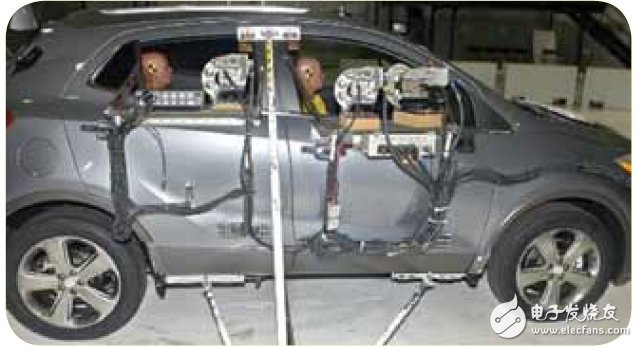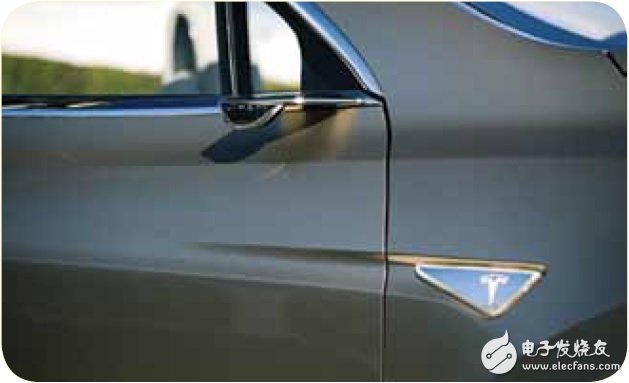Automated driving technology has made great strides; even some Volkswagen models are equipped with anti-dead brakes, tracking controls, several airbags, and many other automation and safety technologies. Most of these technologies complement or even replace the control of driving on the vehicle; what are these technologies currently included? How many (if any) is it too much?
No matter how old you are, as long as you have a driver's license and drive, you should find that the car's automated driving technology has made great progress; even some of the Volkswagen models are equipped with an anti-dead brake system (AnTI-lock Brake System, ABS). ), tracTIon control, several airbags, and many other automation and safety technologies.
Most of these automotive technologies complement or even replace the control of the vehicle; what are these technologies currently included? How many (if any) is it too much?
Airbags should be unquestionable (airbags became the standard vehicle mandated by US regulations in 1998); many advanced technologies have emerged in the past few years, many of which have been mandatory for inclusion in the US Federal Motor Vehicle Safety Standards through legislation. (Federal Motor Vehicle Safety Standards, FMVSS), under the jurisdiction of the National Highway Safety Administration (NHTSA), which is required to be sold by all depots in the United States. Beginning with the mandatory requirements for seat belts in 1967, new technologies are added every year.
The latest technology that NHTSA mandated to add was the reversing image; all vehicles that were listed in the US in 2019 required the installation of reversing cameras. The system uses an LCD display (sometimes hidden in the rearview mirror) that is commonly used in cars today to display images captured by small cameras mounted on the rear bumper, trunk lid or license plate frame.

Figure 1 Some automotive automation and safety technologies have become standard equipment for many Volkswagen models. (Photo source: IIHS)
Although blind spot detection (spot detecTIon) is not mandatory yet, NHTSA is already considering it; the blind spot detection function was already equipped with high-end models a few years ago, which uses the rear view mirrors on both sides of the car. Proximity sensor detects whether there is a car in the adjacent lane and promptly reminds the driver.
When there is a car or other object in the adjacent lane or blind spot area, there will be an alarm indicator light in the rear view mirror or near the mirror; this is a very simple and relatively inexpensive Technology, generally using ultrasonic or capacitive sensors to detect objects, and using a cheap processor and a variety of algorithms to decode, detect, and finally return information to driving.

Figure 2 Reversing camera has been listed as mandatory by the US regulations (listed in 2019) (Source: Cadillac)
Furthermore, some very high-end models use camera and video processing to warn of lane departures, alerting the driver to a drowsy or inattentive driver when the vehicle deviates from the lane by vibrating the steering wheel, seat or other means. As with video cameras, the hardware required for this processing technology has become smaller and more compact, with a higher level of functionality for identifying lane markings, or a simple comparison (which is Road, which one is not).
In addition, although not too high-tech, but also worth noting, Tesla and Volkswagon have recently introduced a concept car that completely replaces the rear view mirror with a small display. The main reason for this is that due to aerodynamic considerations, Nissan's LEAF's large-size, stylish headlight design is specifically designed to reduce air resistance and turbulence caused by the rear view mirror. This problem has plagued car designers for a long time. It is therefore easy to speculate that the next step is to use a video processing technique similar to the lane departure warning system to identify whether there is a car in the adjacent lane.
And you may not know, but the Electronic Stability Control (ESC) is now also mandatory for FMVSS (starting with light-duty vehicles produced in 2012); many high-end models have long been equipped with this feature (the earliest The version can be traced back to the 2000 model).

Figure 3 LEAF headlight design reduces air resistance (Source: Nissan USA)
And (as it was in the 1990s), it is usually just a simple tracking control that reduces wheel slip, and the anti-dead lock system (fast point at work) that uses fast pulse braking when it is activated, the ESC will work. Proactively cut off power and selectively activate the brakes (even if you don't do the brakes) to transmit power to the wheels you need; this system uses a variety of sensors (wheel speed, forward speed, direction input, and roll/tilt accelerometers) ) to determine the intention of the car to drive, the action the car will have, and the possibility of the car rolling or losing control.
Even more impressive is the anti-collision technology, which automatically activates the brakes before an impending impact; similarly, this feature is only available in higher-end models, which use proximity sensors (like blind spot warnings) to detect Measure the stopped vehicle and start the brakes. The same technology is also used to create the AdapTIve Cruise Control, which reduces the set cruising speed to match the speed of the vehicle ahead.
Perhaps the most impressive technology is Parking Assist. At present, a number of cars have semi-automatic parallel roadside parking functions. Simply press the button and align the parking grid lines, and the car can stop itself. This requires the vehicle to be full of sensors, including proximity sensors in front of the car, behind the car and on the side of the car; throttle and car control also need to be added, supplemented by ESC, and the rest is the steering wheel drive - this is a relatively simple problem Can be solved with stepper motor and controller.
So, now our car automation system is able to do braking, acceleration, direction control and anti-collision, what is missing? We will soon be able to achieve a fascinating self-driving car, and affordable sensing and processing technology has made it possible; as advanced features continue to roll out and become the standard for new cars – to what extent, FMVSS may For the sake of public safety, people are required to drive completely without intervention.

Figure 4 Tesla concept car completely replaces the car side mirror with camera and display (Source: Tesla)
C12V280 Engine 6 Series:power Range 2493KWm-3207KWm
Engine.2493KWm-3207KWm
CCSN POWER GENERATION INC.(Engine is a subsidiary of CCSN) , https://www.ccsnengine.com